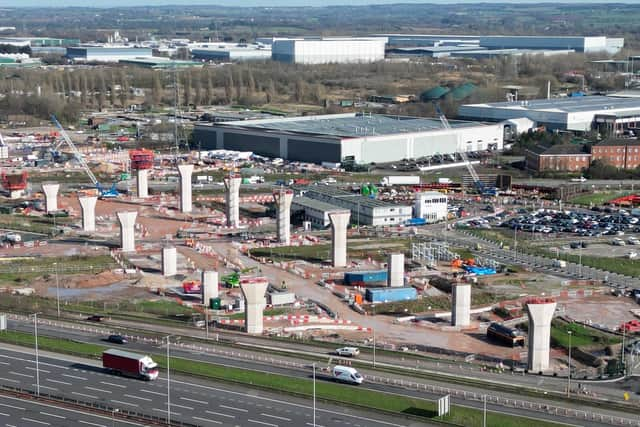A united transport vision for Yorkshire that focuses on outcomes for communities is needed - Russell Jackson
Can we do better? Yes. Here’s how: planning for long-term growth without HS2 requires a rethink on how to invest - and vitally how to deliver - much-needed transport.
Firstly, we need a united transport vision for Yorkshire that takes a multi-modal view and considers infrastructure alongside other important factors, including housing and skills. The focus should always be centred on the outcomes our communities need, and the transformative employment, social and environmental opportunities that better connectivity can bring – particularly with the need to reduce the number of car journeys to meet net zero targets.
Advertisement
Hide AdAdvertisement
Hide AdFrom mass transit in West Yorkshire, Northern Powerhouse Rail and the TransPennine route upgrade, to a new station for Bradford and region-wide smart ticketing; there is an array of schemes that are happening and need to be completed successfully. With so many policy changes and vital projects that are often approached as a one-off challenge, it is difficult to form an overall strategy.


A cohesive vision instils confidence in the engineers, builders and operators of transport networks, contributing to local job creation by enabling businesses to invest in developing the skills needed to finish these schemes quickly and efficiently. But, at the moment, rail projects stop and restart, peak and trough, and that can make businesses unsure or reluctant to commit to investment and innovation.
If we get the vision right, it will also attract investment. Yorkshire’s huge infrastructure needs cannot be funded by the public purse alone and we need to make our infrastructure projects an attractive investment proposition in a competitive global market.
Where we work on rail projects in other countries, we are increasingly seeing more schemes that take the best of public and private sector capabilities to do better. In Florida – not the most well-known place for rail investment – the Brightline company has built a $6bn new railway. If we want better outcomes on our projects, particularly when it comes to their cost, I think we should consider revisiting PPP and PFI approaches to investment and delivery. There is an opportunity for the UK to take a lead on this once again.
Advertisement
Hide AdAdvertisement
Hide AdEven without private funding, when the private sector and devolved authorities work in partnership, we see better results meaning infrastructure such as new rail stations are built with improved management of the budget and to a faster timetable, without a compromise on the quality or benefits. The West Midlands Rail Programme, which is delivering new stations and network improvements for communities in the region, is a good example of this and we’ve recently seen the new and upgraded University Station in Birmingham open. The strong working partnership between the local authority, the engineers, builders and Network Rail meant it could be opened to a much shorter timetable than usual.
Complexities in how funds are currently allocated and accessed, often via a mix of budgets, can lead to indecision that stalls projects and increases costs and delays. But there are other factors at play. All too often the planning process sees significant scope and definition changes at the consultation stage of a project, again impacting budget and timeframes.
Whilst community interest must always be protected, reform of the current planning process would enable infrastructure to be delivered in accordance with the overall planning consent, rather than having to re-engage with all parties post planning for additional requirements down the line.
Rail is the great enabler of so many wider benefits. Rail connects communities, creates jobs, growth and housing and encourages a modal shift away from cars to aid net zero. Yet projects often fall victim to slow decision-making, funding provision and consenting processes that all contribute to even slower progress.
Advertisement
Hide AdAdvertisement
Hide AdKey to achieving public support for schemes will be getting the narrative right; successful rail projects require effective communication too. The industry that builds railways needs to get better at inspiring the passengers of the future, the younger generations so that the benefits and outcomes of critical infrastructure are understood and supported by their communities. Winning hearts and minds is an important element of delivery. Amid national political instability and a looming general election, it is vital that metro mayors, combined authorities and businesses continue to build momentum to ensure vital projects in the North are not allowed to wither on the vine. Devolved authorities working in partnership with the private sector will be key to getting critical projects off the ground.
Russell Jackson is global head of rail at AECOM.
Comment Guidelines
National World encourages reader discussion on our stories. User feedback, insights and back-and-forth exchanges add a rich layer of context to reporting. Please review our Community Guidelines before commenting.